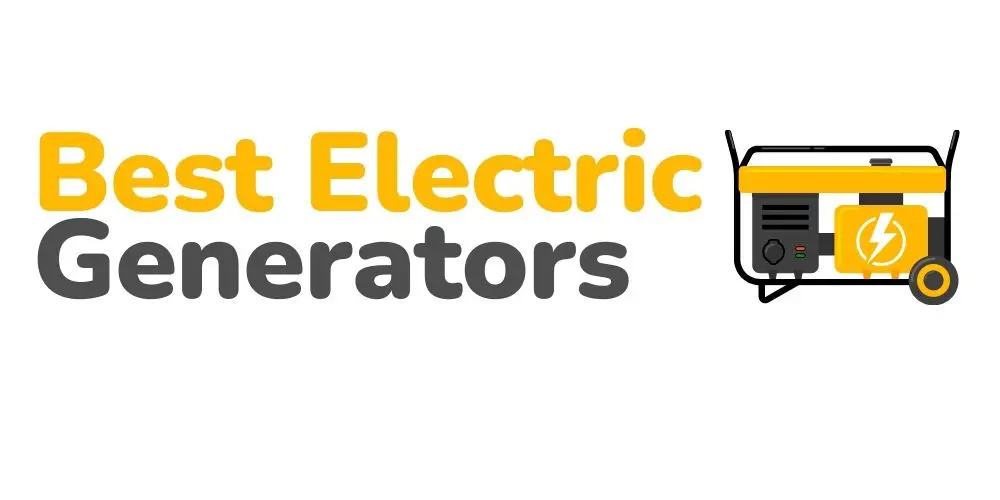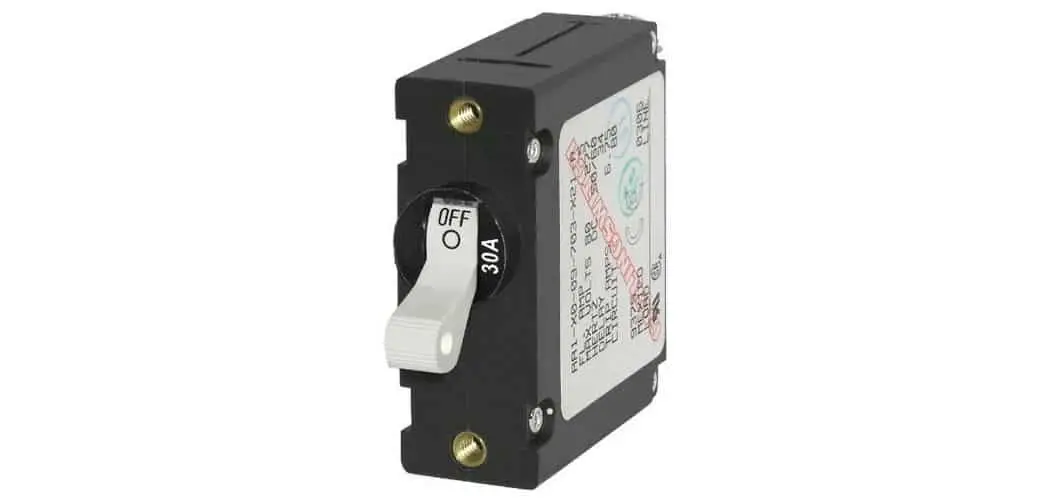For a 5000W generator, you will need a breaker with a 30-amp receptacle. But you will need to keep in mind that it complies with your service panel board brand.
30A receptacles are more than commonly used for generators that are up to 8000W in capacity. Anything more than that, and you will need to go for a 50A breaker that will work for up to 15,000W generator units.
You need to install this breaker to sync it with the grid and keep it safe if a fault occurs. Apart from that, the breaker will also keep your appliances safe from any power stresses caused by extremely short circuits that might damage the generator unit.
Here, we have elaborated the use of breaker with generator in a great detail.
What is a Circuit Breaker for a Generator & What Does It Do?
A circuit breaker for a generator is very similar to the regular circuit breaker in the electric panel board. And its function is to sync your genny to the power grid and keep your unit safe from any faults.
It also prevents stress in the power equipment and keeps the system running smoothly for a longer period. So, you install a breaker to keep your generator and other appliances safe from any underloads or surges.
Just make sure you use the right type of breaker that not only works with your generator but is compatible with your service panel as well.
If you don’t keep these two things in mind, you might not connect your generator to the circuits, and it might not power anything else. There is a strong chance of electrocution or similar other hazards, so you need to be a lot more careful here.
How Do Circuit Breakers Work?
There is a switch along with the conductive plate, which moves the switch as soon as it comes in contact with electricity. The plate links to a static plate within the breaker box, which paves the way for the current. In case of overloading, the contacting plate induces the switch and trip it to sever the current.
Magnetic breakers have an electromagnet in them that gains intensity as current flows through them. If the flow carries on beyond the load limit, it will get the level down, making the contacting plate move and trip the flow.
Thermal breakers use heat to break the flow. There is a bimetallic strip that can sense any temperature rise that occurs in the circuit. A trip occurs when each metal expands as the best turns the contacting plate to break the flow.
Choosing the Right Circuit Breaker
There are different types of circuit breakers to go for. But you need to keep a few criteria in mind when picking the right option according to your generator unit.
In the following section, we will highlight some of those important criteria. So, you don’t end up buying the wrong components and jeopardizing your entire electrical system.
Frequency
Breakers with up to 600A capacity can work with frequencies ranging between 50Hz to 120Hz. Anything higher than 120Hz and your breaker will derate.
When working on your high-frequency projects, the iron losses and eddy currents cause heating to occur in the components. To tackle this issue, you will have to calibrate your breaker to work at this level.
The deration of the breaker depends upon the amperage and the frame size, and the current frequency. Here, the general rule is higher amperage within a frame size will require greater derating.
Higher rated breakers that are 600 and up come with a bimetal (transformer-heater), and they are suitable for 60Hz alternating current. For any applications minimum than 50Hz alternating current, you will have to go for special calibration.
Solid-state trip breakers all come pre-calibrated for 60Hz and 50Hz applications. However, it is recommended to get assistance from a professional and calibrate those measures before proceeding with your project.
Continuous current rating
Based on this rating, breakers molded come with an ampere rating at a specific ambient temperature. This rating is the continuous current rating of the icebreaker, and it will address the ambient temperature where it has been calibrated. Generally, a breaker should calibrate at around 104F by their manufacturers.
Ampere rating solely depends upon the load type and the duty cycle when we are talking about any appliance. The National Electric Code governs this rating, and it is the primary source of information regarding load cycles in the industry.
Voltage rating
You can calculate this rating by looking at the highest voltage applied at all the end ports. You can also assess it by looking at the distribution type and how you can directly integrate this breaker into your system. Choosing the breaker with enough voltage is critical so it can meet the demand from the end application.
Interrupting capacity
You must also check the interrupting capacity of the breaker that you will be using for your generator. It needs to have enough capacity to prevent the system from failing. You will have to determine the maximum amount of fault supplied to it by the system.
The breaker capacity must be greater or equal to the fault amount delivered when you connect the breaker. If you fail to apply to interrupt capacity correctly, then your breaker will get damaged.
Operating conditions
You also need to keep the operating conditions in mind when looking for the right circuit breaker. This is where you have to consider various aspects with the end-user location. Each of these breakers is different, and some are suitable for more challenging conditions.
Breakers calibrate for ambient temperatures of up to 104F. Previously breakers were calibrated for the ambient temperature of up to 77F. But now, the breakers available on the market are for tougher conditions.
These breakers must also come with various moisture treatments to resist mold and fungus. This is especially the case if the panel is installed in corrosive and humid areas.
You also need to address the issue of high shock probability. This is especially the case if you are going to install the breaker in such an area. Apart from that, you also need to keep in mind the altitudes of over 6000 feet.
You have to derate your breaker to keep its current carrying ability at this height. Thinner air doesn’t carry heat away from the components, so your breaker needs to be calibrated for that.
Consider the resting position of your breaker, you can either install it horizontally or vertically. Just ensure that you have it installed within an enclosure if your panel is in high wind areas.
Maintenance and testing
You have to make sure that you only consider breakers that come with UL and NEMA certification. These breakers are tested for their performance under the National Electric Code. If you are looking for exceptional reliability and performance, molded case breakers are superior to all other breaker types.
What type of breaker is suitable for a generator?
You will have to go for a breaker that is compatible with your electrical panel. Plus, you also have to keep it compatible with your generator’s amperage. Typically, a 30A breaker is suitable for all generators up to 8000W. At the same time, 50A breakers are ideal for all generators over 85000W.
Can I backfeed via a breaker?
Backfeeding can be dangerous, and it might be illegal in your area. It also involves flowing current in reverse. Therefore, there are certain risks associated with it. So, it is better that you don’t backfeed no matter what. Otherwise, it will damage your circuit.
Should I turn off the main breaker while running my generator?
It is a safe practice to turn off the main breaker before you start your generator breakers. Plus, turn it off before you turn the generator breaker off. This way, neither of the circuits will draw any current, and they will both work smoothly.
Final Word
Different types of breakers are available for different generators. So, you have to decide based on the service panel and generator compatibility. Apart from that, there are some other factors that you need to keep in mind as well. But generally, a 30A breaker works for all gennies up to 8000W. Whereas 50A breakers work for all gennies up to 15000W.

